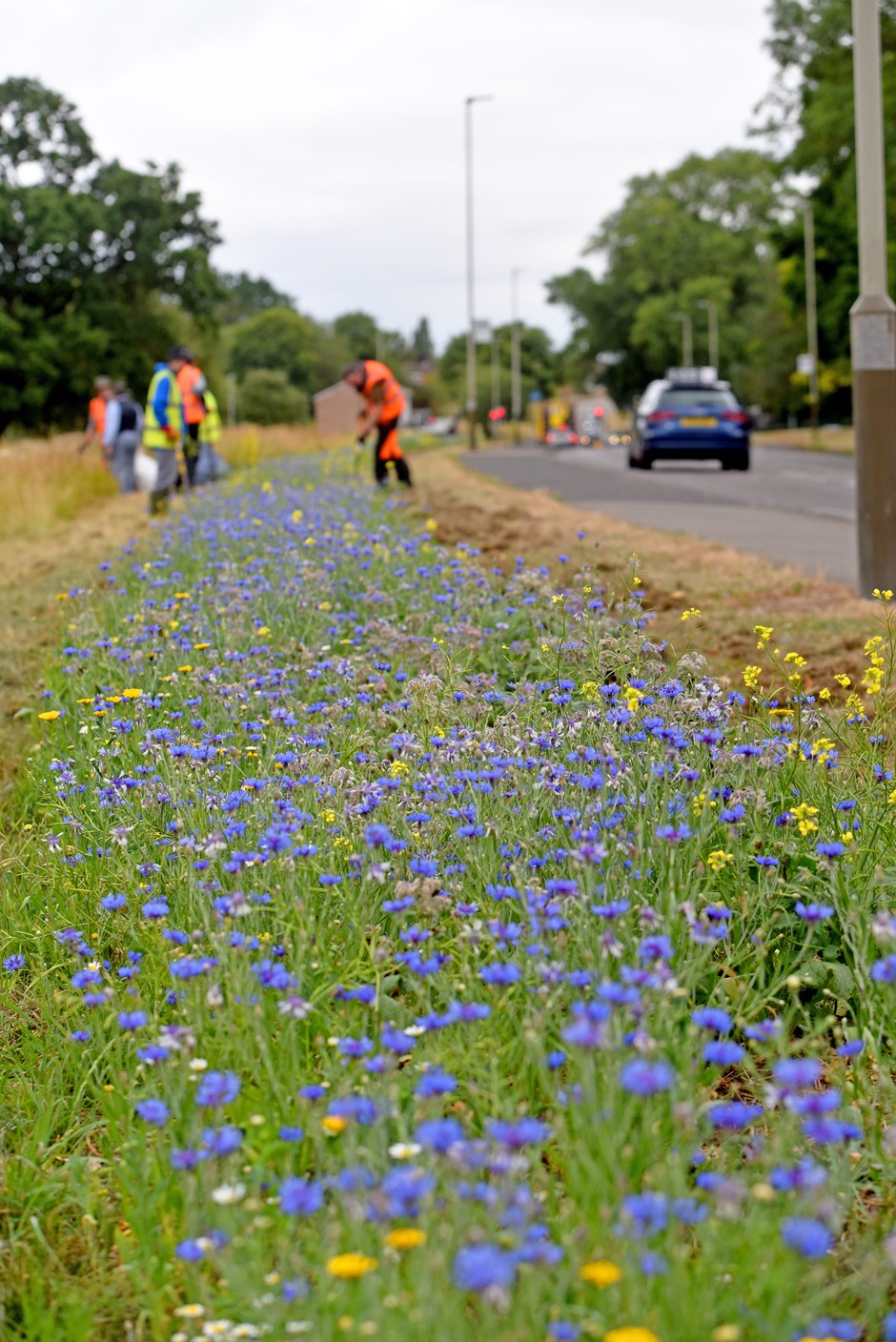Grassland Strategy 2023-2033
<div class='container-fluid container--no-background'>
 </div>
</div>
We adhere to different specifications for the creation, improving and maintaining grasslands to improve biodiversity and optimise carbon storage.
There are advantages and disadvantages to each method which are more fully explored in the full document.
Annual Flowers - sites created on roadside verges and suitable park grassland areas to create a highly visual display of native and non-native plants with a flowering season between March and mid-October.
Perennial Meadows (cut and lift) – Applied to previously species-poor grassland by deliberate seeding to improve biodiversity and carbon storage.
Flowering Lawn – deliberately created with a rich mix of hardy wildflowers improving biodiversity and can withstand cutting up to 6 times a year.
Naturalised Grass (one cut) - created on previously species-poor grassland providing Invertebrate support and reducing the carbon footprint of maintenance.
Naturalised grass (Cut and Lift) – similar to naturalised grass areas but the cuttings are removed.
Biennial Cut - generally species-poor grasses that are cut every 2 years. They are often adjacent to more bio-diverse areas to protect them due to the infrequency of the cut. They require minimal resource but provide a high value biodiversity as they provide shelter and hibernation sites for invertebrate and small mammals.
Sports, formal lawns, and specialist grassed areas are not included as part of this strategy for grasslands.
There are advantages and disadvantages to each method which are more fully explored in the full document.
Annual Flowers - sites created on roadside verges and suitable park grassland areas to create a highly visual display of native and non-native plants with a flowering season between March and mid-October.
Perennial Meadows (cut and lift) – Applied to previously species-poor grassland by deliberate seeding to improve biodiversity and carbon storage.
Flowering Lawn – deliberately created with a rich mix of hardy wildflowers improving biodiversity and can withstand cutting up to 6 times a year.
Naturalised Grass (one cut) - created on previously species-poor grassland providing Invertebrate support and reducing the carbon footprint of maintenance.
Naturalised grass (Cut and Lift) – similar to naturalised grass areas but the cuttings are removed.
Biennial Cut - generally species-poor grasses that are cut every 2 years. They are often adjacent to more bio-diverse areas to protect them due to the infrequency of the cut. They require minimal resource but provide a high value biodiversity as they provide shelter and hibernation sites for invertebrate and small mammals.
Sports, formal lawns, and specialist grassed areas are not included as part of this strategy for grasslands.
